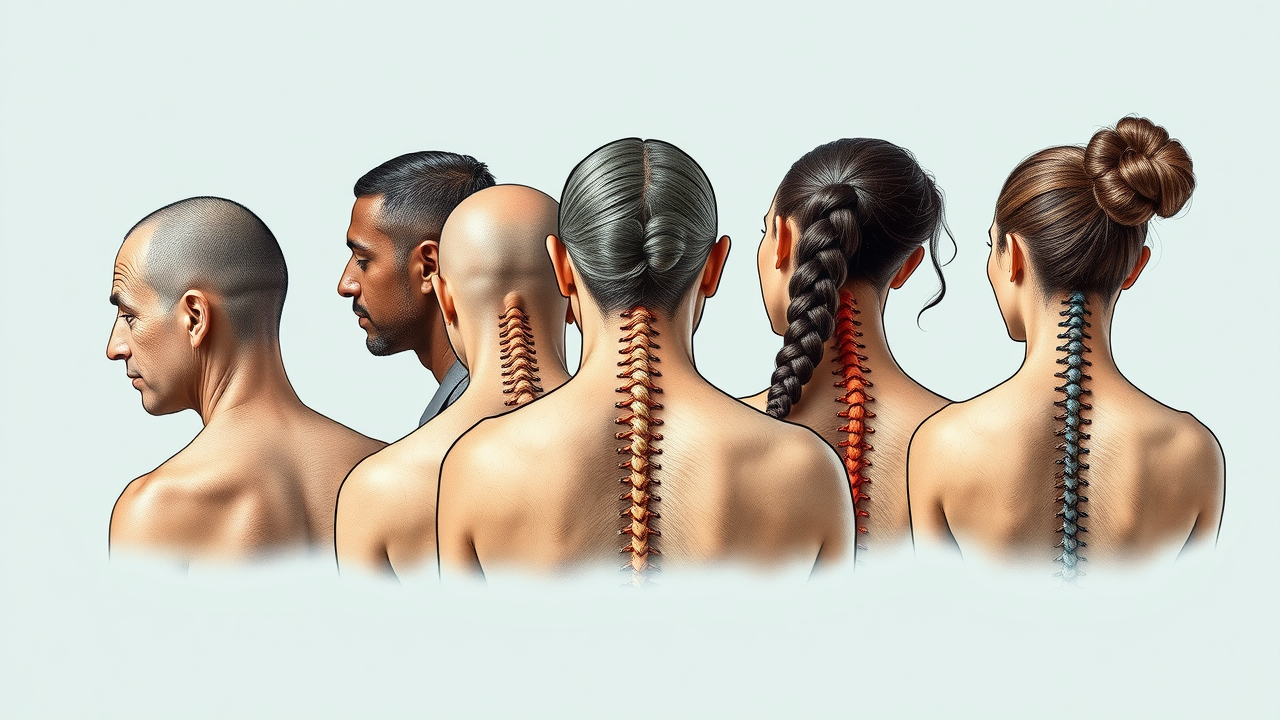Did you know that nearly 35 million Americans receive chiropractic care every year? This astonishing figure reveals just how mainstream and effective chiropractic techniques have become in the pursuit of holistic health and pain relief. Whether you're seeking to banish back pain, improve your range of motion, or unlock your body's full potential, modern chiropractic adjustment methods provide science-based, practical solutions for every lifestyle.

Unveiling the Power of Chiropractic Techniques: Surprising Facts You Need to Know
Did you know that nearly 35 million Americans receive chiropractic care annually? This statistic highlights a paradigm shift in how people approach holistic health and seek out effective chiropractic techniques for relief, recovery, and performance.
What You Gain from Exploring Chiropractic Techniques
Clarity on the different chiropractic techniques and their targeted outcomes
Deep understanding of chiropractic adjustment and spinal manipulation
Insight into advanced forms like spinal decompression and the activator method
Guidance for choosing the right chiropractic treatment for your goals

Understanding Chiropractic Techniques: Core Concepts and Search Intent
Chiropractic techniques are holistic methods designed to address musculoskeletal problems, improve biomechanics, and optimize overall health.
Users seeking this information are often looking to relieve pain, prevent injuries, or maximize wellness through chiropractic adjustment, spinal manipulation, and other chiropractic treatments.
Chiropractic techniques go beyond basic back pain relief—these evidence-based therapies are focused on restoring balance, improving joint function, and nurturing long-term mobility. The core of chiropractic care involves a deep understanding of how spinal manipulation and specific adjustment methods can target both localized pain and overall systemic well-being. With so many options—manual therapy techniques, diversified technique, activator method, and more—patients can find tailored solutions adaptable to their lifestyle and health needs.
If you’re searching for chiropractic adjustments that address chronic lower back pain, enhance athletic performance, or simply amplify your sense of wellness, you’re not alone. Millions turn to chiropractic treatment each year, drawn by its reputation for natural pain management, functional rehabilitation, and whole-body health optimization. These methods use a unique blend of manual therapy, instrument-assisted approaches, and even advanced decompression techniques to deliver effective, long-lasting results.
The Foundations of Chiropractic Care and Techniques
Defining Chiropractic Technique and Its Role in Health
A chiropractic technique is a specific method or approach that a chiropractor uses to move, adjust, or manipulate the spine and other joints. These methods are designed to correct joint dysfunction and restore proper movement patterns in the body. The primary goal is to relieve pain, enhance range of motion , and improve the quality of life by ensuring that the body’s biomechanical systems are functioning as intended. Chiropractic adjustments often use high velocity, low amplitude motions to provide quick and precise realignment of the spine.
Chiropractic care is not just about mitigating discomfort—it’s rooted in the philosophy of facilitating optimal nerve flow and holistic healing. By utilizing proven adjustment techniques and spinal manipulation , chiropractors can increase spinal mobility, ease soft tissue tension, and support better posture. Patients experience tangible benefits such as reduced lower back pain , improved daily activity levels, and even better athletic performance thanks to the role of chiropractic technique in health management.
History and Evolution of Chiropractic Adjustment
The history of chiropractic care dates back to the late 19th century when D.D. Palmer performed the first documented spine manipulation. Since then, the field has witnessed a remarkable evolution, incorporating scientific advances and new adjustment techniques to enhance both safety and effectiveness. Early chiropractic adjustments might have focused primarily on spinal manipulation ; today, practitioners use a broad array of methods, including manual and instrument-assisted approaches, to suit patient needs and medical history.

"Chiropractic care is not just about pain relief—it's about unlocking your body's full potential."
Over decades, the refinement of chiropractic techniques—such as the diversified technique , Gonstead chiropractic technique , and table drop methods—have helped practitioners deliver reliable care with increasing precision. The integration of advanced tools like the activator method represents the field’s ongoing commitment to innovation, evidence-based results, and patient-centered care.
Categories of Chiropractic Techniques: Which Chiropractic Adjustment Is Right for You?
Comparison of Popular Chiropractic Techniques |
|||
Chiropractic Technique |
Description |
Common Uses |
Evidence Level |
|---|---|---|---|
Diversified Technique |
Manual, high velocity low amplitude spinal adjustment targeting specific vertebrae |
General back pain, joint dysfunction, mobility issues |
High |
Activator Method |
Instrument-assisted adjustment using a spring-loaded device for gentle, precise thrusts |
Patients preferring low-force techniques; elderly or pediatric care |
Moderate |
Gonstead Technique |
Manual adjustments with detailed assessment, often with patient lying on their side |
Disc problems, lower back pain, specific joint dysfunction |
High |
Thompson Drop-Table |
Manual adjustment with a special table that drops for easier movement and lower force |
Patients with sensitive joints; flexibility and comfort |
Moderate |
Spinal Decompression |
Mechanized table or traction techniques to gently stretch and decompress spinal segments |
Disc herniation, sciatica, nerve impingements |
Emerging |
Manual Chiropractic Adjustment: The Diversified Technique
The diversified technique is widely regarded as the gold standard for manual chiropractic adjustments. It involves a combination of hand techniques to achieve high velocity, low amplitude spinal manipulations, targeting restricted joints throughout the spine and extremities. This approach is effective for restoring joint function , enhancing range of motion , and providing rapid pain relief for issues like back pain and lower back discomfort.
Chiropractors using the diversified technique often perform adjustments while the patient is lying on their side or in other positions that best facilitate targeted spinal realignment. This method is highly tailored, with the chiropractor applying precise, controlled force to address specific joint dysfunction . Patients commonly experience improved mobility, reduction in soft tissue tension, and an overall sense of improved well-being. As one of the most researched chiropractic techniques, it’s often the first line of care for many musculoskeletal complaints.
Instrument-Assisted Chiropractic Techniques: Activator Method
For those seeking a gentler approach, the activator method offers effective chiropractic adjustment using a handheld, spring-loaded device. This instrument-assisted chiropractic technique delivers rapid, low-force impulses directly to targeted spinal segments or extremities. The device provides consistent speed and force, eliminating the potential for muscle guarding and offering precise corrections without discomfort.

The activator method is especially beneficial for patients who may not tolerate manual adjustments well—such as children, the elderly, or those with acute pain or osteoporosis. It’s also favored by chiropractors focused on precision and minimal invasiveness. While research into the activator method shows moderate levels of evidence for its efficacy, many patients prefer it for its comfort, repeatability, and effective results on soft tissue and joint restoration.
Gentle Techniques in Chiropractic Adjustments: The Thompson and Gonstead Methods
Not all chiropractic adjustment techniques require strong force—many gentle approaches offer remarkable benefits. The Thompson technique employs a special drop-table that supports the body and “drops” slightly as the chiropractor applies pressure, minimizing resistance and discomfort. This allows for a lower-force movement that still delivers therapeutic outcomes, making it ideal for sensitive patients or those recovering from injury.
Similarly, the Gonstead technique focuses on thorough assessment—including palpation, motion analysis, and sometimes X-ray—to pinpoint the exact location of joint dysfunction . Adjustments are performed with meticulous care, often with the patient lying on their side , to correct spinal misalignments and restore proper function. Both the Thompson and Gonstead methods are renowned for their gentle approach, making them suitable for a wide range of patients seeking pain relief, improved joint health, and customized chiropractic care.
Deep Dive: Spinal Manipulation and Spinal Decompression in Chiropractic Treatment
How Spinal Manipulation Works in Chiropractic Adjustments
Spinal manipulation is the cornerstone of chiropractic adjustment, involving a series of manual movements applied to vertebrae and joints. This therapy technique often uses high velocity, low amplitude thrusts to restore mobility, improve nerve communication, and correct spinal misalignments. The result? Increased range of motion , reductions in back pain or lower back pain , and an overall improvement in how your body feels and moves.
These adjustments are delivered after careful consideration of the patient’s medical history, sensitivity, and unique anatomy. The precision of this manipulation technique means patients often experience immediate, noticeable benefits—from pain reduction to restored proper movement. Scientific evidence supports spinal manipulation for treating many conditions beyond back discomfort, including headaches, neck stiffness, and even posture-related problems.
Modern Approaches: Spinal Decompression and Traction Techniques
Spinal decompression is an advanced chiropractic therapy designed for those suffering from conditions like herniated discs, sciatica, or nerve root compression. This approach uses specialized tables or traction devices to gently stretch the spine, relieving pressure on spinal discs and nerves. The goal is to promote the movement of water, oxygen, and nutrients to the affected areas—encouraging healing and reducing inflammation.
While not every patient requires spinal decompression, it serves as an invaluable treatment option for chronic pain, non-surgical management of disc problems, and individuals with limited response to traditional chiropractic care. The use of modern traction devices allows chiropractors to tailor both the force and direction of stretch for maximal comfort and efficiency, contributing to a growing body of support for decompression as a non-invasive solution for persistent spinal issues.
Exploring the Most Effective Chiropractic Technique for Your Needs
How to Choose Among Diverse Chiropractic Adjustments
With so many chiropractic techniques available, selecting the best fit depends on multiple factors. Key factors include your specific condition, the experience and expertise of your provider, and the available scientific evidence supporting each therapy technique . For example, a patient with acute lower back pain may benefit most from the diversified or Gonstead technique, which are proven to restore range of motion and reduce discomfort rapidly.
Patient condition: acute or chronic complaint, age, or sensitivity
Chiropractor expertise and technique preference
Evidence-based outcomes and patient-reported results
Collaborating with a trusted chiropractic care provider ensures you receive an individually tailored plan that addresses both the root cause and your lifestyle or health goals. Always discuss your medical history, symptoms, and expectations openly to discover which type of adjustment or chiropractic manipulation is ideal for your needs.
New Innovations: Recent Developments in Chiropractic Technique

The field of chiropractic care is rapidly advancing with the adoption of new technologies. Modern developments include computer-assisted chiropractic adjustments , laser-guided tools, and even AI-driven diagnostic programs that enhance accuracy and treatment personalization. These innovations improve the precision of force delivery, minimize patient discomfort, and allow for continuously adaptive care tailored to individual needs.
Laser therapy and ultrasound-guided adjustments represent additional breakthroughs, helping practitioners treat soft tissue dysfunction and complex musculoskeletal complaints with even greater safety and efficacy. The continual evolution of chiropractic technique ensures patients have access to minimally invasive, maximally effective solutions for health and recovery.
Comprehensive List of Chiropractic Methods: From Classic to Cutting-Edge
Diversified technique
Activator method
Gonstead chiropractic technique
Thompson drop-table
Spinal decompression
Flexion-distraction
Manipulation under anesthesia

The Role of Chiropractic Care in Modern Health Strategies
Integrated Healthcare: Chiropractic Treatment and Overall Wellness
Today, chiropractic care is recognized as a vital component of integrated healthcare models, working seamlessly alongside primary care physicians and other wellness practitioners. By addressing musculoskeletal dysfunction, reducing back pain , and enhancing physical performance, chiropractic treatments play a crucial role in preventive medicine and holistic health management.
Many patients utilize chiropractic treatment as a complement to other therapies, augmenting their results and improving overall outcomes. Whether as part of an athletic regimen, rehabilitation program, or ongoing wellness strategy, chiropractic techniques offer safe, non-pharmacologic options for achieving optimal health.
Safety Considerations and Contraindications for Chiropractic Adjustments
While the majority of chiropractic adjustments are safe when performed by trained professionals, it’s essential to consider individual health factors. Contraindications may include conditions such as severe osteoporosis, bone fractures, certain types of arthritis, or active infections. A thorough assessment by your chiropractor—including detailed medical history and diagnostic exams—helps to identify any potential risks before starting therapy.
Open communication and evidence-based practice are the keys to ensuring the safety and efficacy of all chiropractic techniques . Patients should never hesitate to discuss concerns, report symptoms, or ask for modifications based on their unique needs or expectations.
Answering Your Questions: Chiropractic Techniques Explained
What are the 7 chiropractic adjustments?
The seven primary chiropractic adjustments include Diversified, Gonstead, Activator, Thompson, Flexion-Distraction, Toggle Drop, and Logan Basic. Each technique focuses on a specific area or approach and is chosen based on patient needs.
What is the most effective chiropractic technique?
Effectiveness varies; the diversified technique is the most widely used and researched, but individual responses differ based on condition, patient preference, and chiropractor skill.
What is the new technique of chiropractic?
Recent innovations include computer-assisted and laser-guided chiropractic adjustment, which offer precision and can benefit certain patient populations.
What are the methods of chiropractic?
Methods include manual adjustment, instrument-assisted adjustments, flexion-distraction, and varying forms of spinal decompression. Choice depends on patient goals, diagnosis, and practitioner style.
Frequently Asked Questions About Chiropractic Techniques
Are chiropractic adjustments safe? When performed by a licensed professional, chiropractic adjustments have a strong safety record. Serious side effects are rare, but always disclose your full medical history to your chiropractor.
How long does chiropractic treatment usually last? The duration varies; some conditions improve after a few visits, while chronic issues may require ongoing care. Your chiropractor will tailor a plan to your progress and goals.
How do I know which chiropractic technique is right? Factors include your symptoms, health history, tolerance for manual or instrument-assisted methods, and the chiropractor’s evaluation. Open communication is key to personalized care.
Can chiropractic care help with chronic conditions? Many people with chronic pain, migraines, or certain musculoskeletal disorders experience significant relief and improved mobility from chiropractic care. Results vary individually.
What should I expect after a chiropractic adjustment? Many patients feel immediate relief, while others experience mild soreness or fatigue. These typically resolve quickly. Follow your practitioner’s aftercare guidance for best results.
Expert Perspectives: Quotes from Renowned Chiropractors
"A good chiropractic technique adapts to the needs of the patient, not the other way around." – Dr. Lisa Harper, DC
A Summary of Chiropractic Techniques and Their Impact on Health
Chiropractic techniques range widely, and choosing the right chiropractic adjustment or spinal manipulation technique can dramatically influence your quality of life. Make informed decisions based on your needs and seek evidence-based chiropractic care for optimal results.
Take action: Explore the many chiropractic techniques available, consult with skilled professionals, and make informed decisions to achieve your health and wellness goals.
To deepen your understanding of chiropractic techniques, consider exploring the following resources:
10 Types of Chiropractic Methods for Joint Disorders provides an in-depth look at various chiropractic methods, including the Flexion-Distraction and Activator techniques, detailing their applications and benefits.
7 Types of Chiropractic Adjustments offers a comprehensive overview of common chiropractic adjustments, such as the Diversified and Gonstead techniques, explaining their specific uses and effectiveness.
These resources will equip you with a broader perspective on chiropractic care, helping you make informed decisions about the techniques that best suit your health needs.
 Add Row
Add Row 

 Add
Add 


Write A Comment